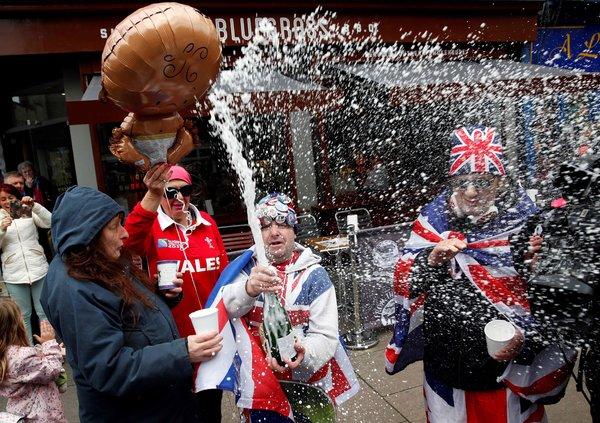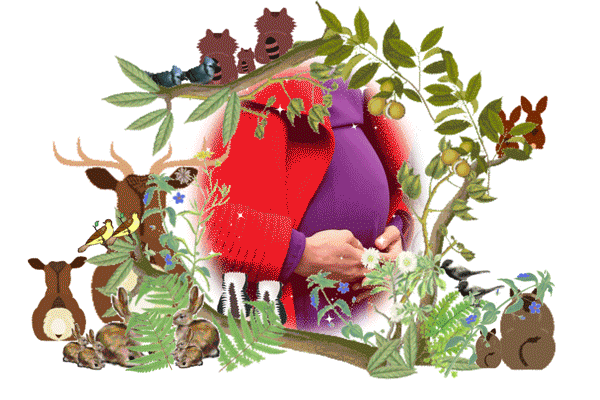LONDON — The Duke and Duchess of Sussex — better known as Prince Harry and Meghan Markle — on Monday welcomed their first child, a boy, the first interracial baby in the British monarchy’s recent history.
The newborn is seventh in line to the British throne, behind Prince Harry. It is not clear whether the child will receive a royal title, like those bestowed on the three children of Prince William, Harry’s older brother, and William’s wife, Catherine.
Buckingham Palace said in a statement that Meghan gave birth at 5:26 a.m. and that her mother, Doria Ragland, was with the new parents at their home, Frogmore Cottage. The newborn boy weighed 7 pounds, 3 ounces, the royal couple wrote on Instagram; a name had not been chosen yet.
The Queen, The Duke of Edinburgh, The Prince of Wales, The Duchess of Cornwall, The Duke and Duchess of Cambridge, Lady Jane Fellowes, Lady Sarah McCorquodale and Earl Spencer have been informed and are delighted with the news.
— The Royal Family (@RoyalFamily) May 6, 2019
“This little thing is absolutely to die for, so I’m just over the moon,” a beaming Prince Harry told reporters outside the couple’s residence near Windsor Castle. “Mother and baby are doing incredibly well. It’s been the most amazing experience I can ever possibly imagine. How any woman does what they do is beyond comprehension, and we’re both absolutely thrilled.”

The birth of Harry and Meghan’s son elated royal fans on Monday in Windsor, England.CreditAdrian Dennis/Agence France-Presse — Getty Images
The baby is sure to be the object of uncommon fascination, adored and criticized as a symbol of the modernization of Britain’s royal family.
Harry, 34, and Meghan, 37, have shaken up the royal family in a number of ways: The duchess is an American and a former actress, and their wedding last May featured a gospel choir, a freestyling African-American bishop and a gaggle of Hollywood celebrities.
They continued to set aside convention after the wedding, opening their own Instagram account and offering little access to the royal-obsessed British news media. In April, they announced they were canceling the traditional photo opportunity outside the Lindo Wing at St. Mary’s Hospital in the heart of London, curtailing the ritual hullabaloo that usually surrounds royal births.
For many, the new baby’s importance will be indelibly linked with race.
Britain is 87 percent white, but interracial children make up its fastest-growing ethnic category, and will soon be the country’s largest minority group. The entry of Meghan Markle, the descendant of plantation slaves, into the royal family resonated deeply with many people of African descent, who almost immediately began to anticipate the birth of the couple’s first child.
Royal Baby Traditions Are Real. Harry and Meghan Are Shaking Them Up.
As Prince Harry and Meghan Markle prepare for the birth of their first child, we look at 100 years of royal family pictures from the New York Times archive.
“It’s hopeful for people of my kids’ generation to see a princess of mixed race,” said Lise Ragbir, who is black and has written of her own experience raising a lighter-skinned child.
Repeatedly, beginning when her daughter was 6 months old, she said, strangers have approached her to ask, “Is that your baby?”
“It will be such a recognizable baby that it could shift people’s awareness,” said Ms. Ragbir, 45, a gallery director in Austin, Tex. “When one of the most famous families in the world does not have the same skin tone, people might pause before asking a stranger, ‘Is that your baby?’”
Historians have noted that the duchess herself cannot be definitively described as the first interracial royal. Some scholars have argued that Queen Charlotte of Mecklenburg-Strelitz, the wife of King George III, had African ancestry through the Portuguese royal family. If true, it would have been passed on to her own descendant, Queen Victoria.
Prince Harry, in particular, has been alert for racism in the discussion of his young family.
In 2016, he took the unusual step of condemning British tabloids and social media commentators for the “racial undertones” and sexism of their coverage of Ms. Markle. Last year, the right-wing U.K. Independence Party ousted its leader after it was reported that his girlfriend had used racist language to deride the future duchess.
The duchess, the daughter of a white man and a black woman, grew up in a mostly white neighborhood, where her mother was sometimes mistaken for her nanny. In an essay, she described hesitating, as a schoolgirl, when she was asked to fill out a census form that identified her as either white or black.
“There I was (my curly hair, my freckled face, my pale skin, my mixed race) looking down at these boxes, not wanting to mess up, but not knowing what to do,” she wrote in an essay for Elle Magazine published in 2015.
When her teacher told her to check “Caucasian” because that was “how she looked,” she refused.
“I left my identity blank — a question mark, an absolute incomplete — much like how I felt,” she wrote. Her father advised her, “If that happens again, you draw your own box.”
As the duchess’s due date approached, some Britons voiced concerns about the conversation around the child’s race.
“Colorism is definitely a huge thing, and I think that links into it, because if the child does come out darker skinned, then you know that’s going to make the news — and not for a good reason,” Tanya Compas, a youth worker, told the BBC’s “Woman’s Hour” program when the pregnancy was announced.
Journalists have bridled at charges that their coverage of the royal family has been tainted by racism, pointing out that British news outlets have always been free to criticize the royals, whose luxurious lifestyle is supported by public funds.
Among the sore points this year was the baby shower hosted by celebrity friends of the duchess in New York, a privately financed event that was said to cost 330,000 pounds, or more than $430,000.

The Royal Baby: Frequently Asked Questions
Everything you need to know about the birth of Meghan Markle and Prince Harry’s baby.
“The clash comes when a free-spending American TV celebrity, the independent Ms. Markle, becomes the British queen’s granddaughter-in-law and joins soberer ornaments on the cracked marble mantelpiece of ancient royalty,” the journalist Libby Purves wrote in February in a column for The Times of London.
The Sussexes, in short, have become another front in the British culture wars, like the vegan sausage roll, or Brexit. The tabloids have pounced: Prince Harry is making a television series on mental health with (gasp) Oprah Winfrey! The duchess keeps hugging members of the public! They may choose an American nanny! Baby Sussex may not attend Eton!
Last fall, the couple announced they would move out of Kensington Palace, in central London, and take up residence about 25 miles west of the British capital in newly refurbished quarters: Frogmore Cottage, near Windsor Castle. There have been rumors that the couple could be dispatched in the next few years on an extended tour of Africa, where 19 nations, mostly former colonies, are members of the Commonwealth of Nations.
Those moves appeared to hint of a rift between Harry and his brother, William, observers said, but no concrete evidence has surfaced.







